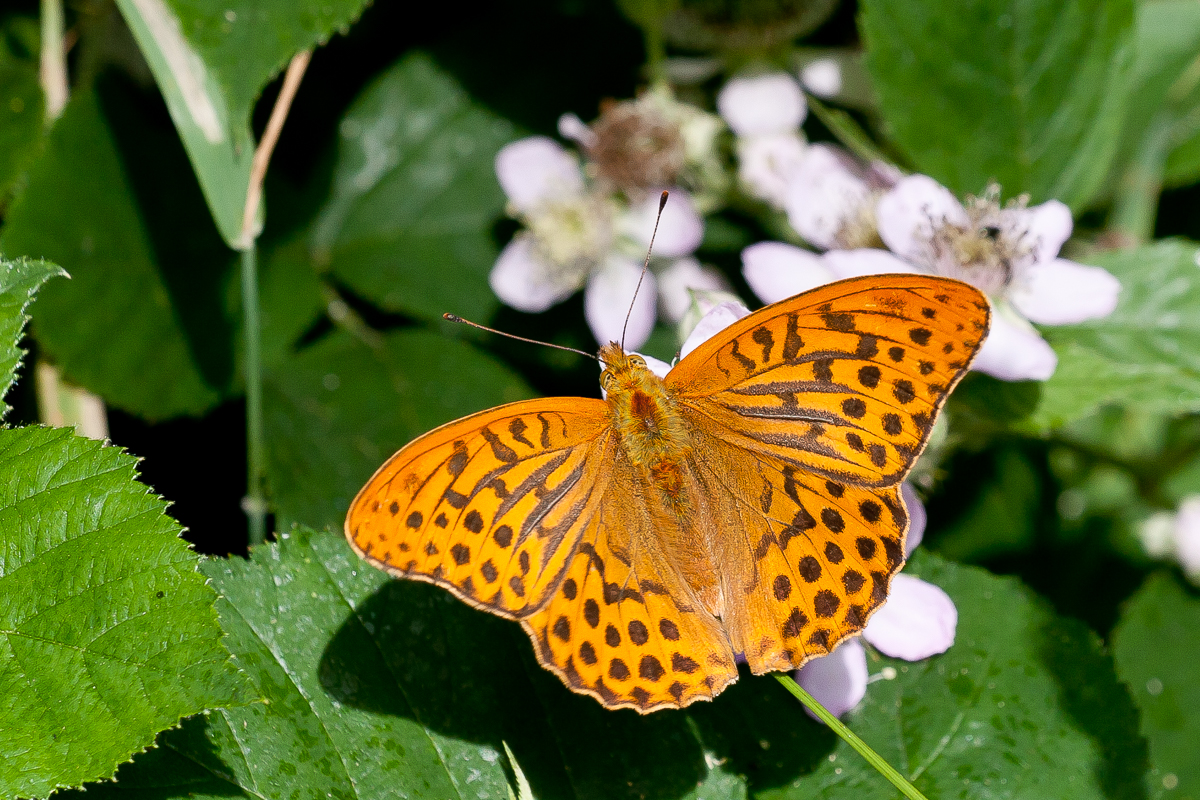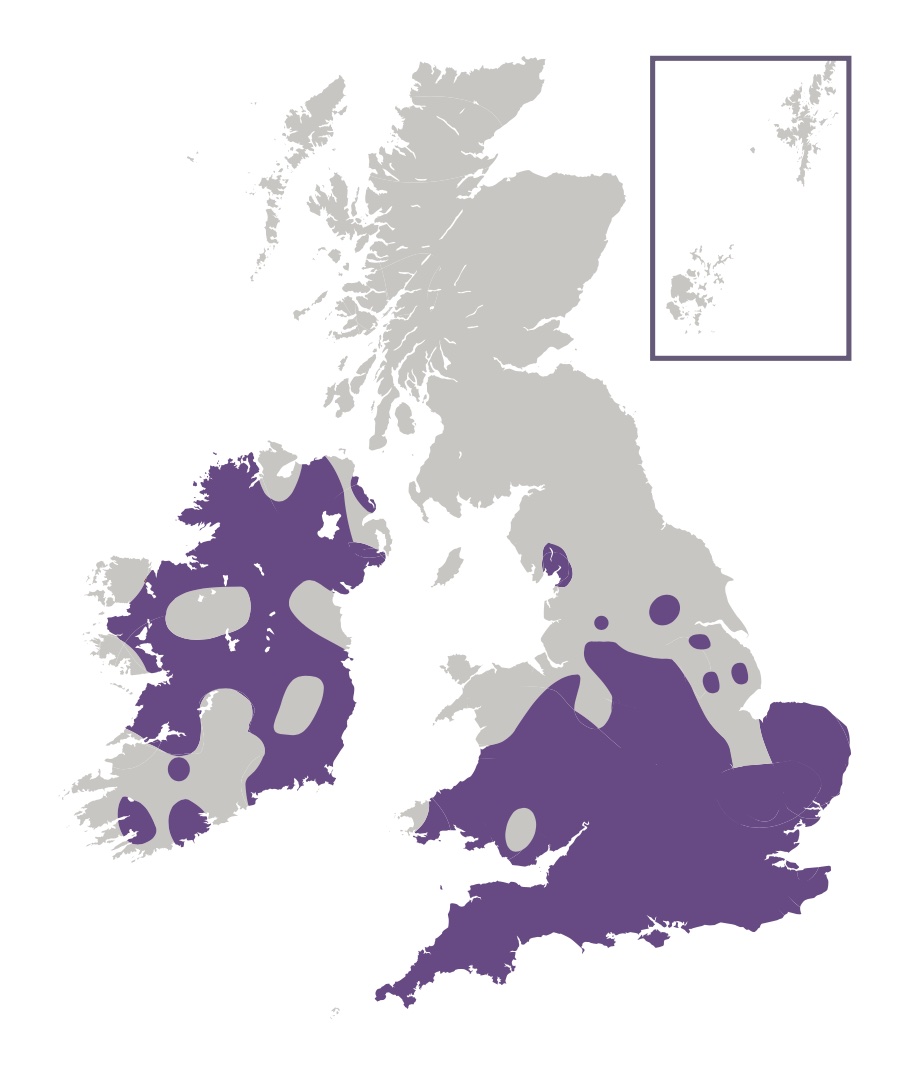
Photo © Peter Eeles
This butterfly is our largest fritillary and gets its name from the beautiful streaks of silver found on the underside of the wings. The bright orange male is quite distinctive as it flies powerfully along woodland rides, pausing only briefly to feed or investigate anything with an orange hue that could be a potential mate. The male has four distinctive black veins on its forewings that contain special "androconial" scales that are used in courtship. These veins are known as "sex brands". The female is paler than the male, has rounder wings and more-prominent spots. In England and Wales, the Silver-washed Fritillary is found in woodlands south of a line between Montgomeryshire in the west and East Kent in the east, with a few scattered colonies elsewhere, including those in Westmorland and West Lancashire. This species is also widely distributed in Ireland, but is absent from Scotland, the Isle of Man and the Channel Islands.
The adults spend much of their time in the woodland canopy where they feed on aphid honeydew. However, they often descend to nectar on Bramble blossom and Thistle flowers - two of their favourite nectar sources.
The courtship flight of this butterfly is one of the most spectacular of all the British species. The female flies in a straight line while the male continuously loops under, in front and then over the top of the female. With the courtship flight over, the pair lands on a convenient platform where the male showers the female in scent scales. The male then draws the female's antennae over the sex brand and mating subsequently takes place.

This butterfly is most-commonly found in woodland where the larval foodplant, Common Dog-violet, grows on the woodland floor. The butterfly can also be found flying along lanes and more-open countryside in some areas. Both deciduous and coniferous woodland is used - the presence of this butterfly is only limited by the presence of nectar sources and larval food plant.
Adults feed primarily on brambles (Rubus spp.) and thistles (Carduus spp. and Cirsium spp.). Common Fleabane (Pulicaria dysenterica), knapweeds (Centaurea spp.), ragworts (Jacobaea spp.), Water Mint (Mentha aquatica) and Wild Privet (Ligustrum vulgare) are also used.
The primary larval foodplant is Common Dog-violet (Viola riviniana).
